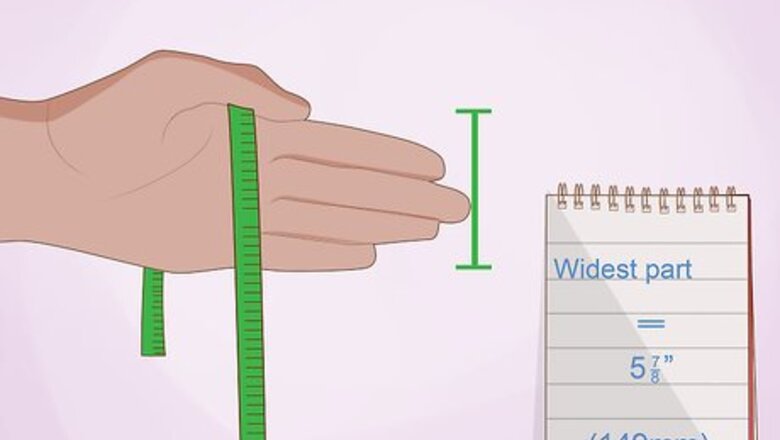
views
Determining Your Regular Glove Size
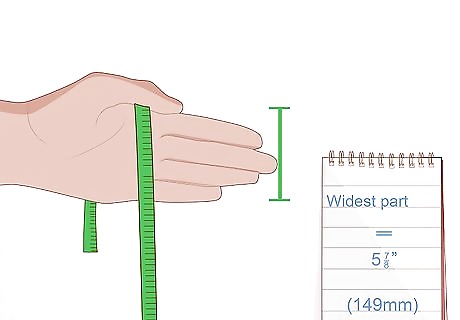
Measure the widest part of your hand. Hold the end of a fabric tape measurer at the center of your palm with your thumb. Then, use your other hand to wrap the tape measurer around the outside of your hand. Once you’ve wrapped it around, hold it taut in line with the end of the tape measurer. Write down the measurement in inches as precisely as you can. Record numbers in millimeters instead of inches if you live in an area that uses metric measurements.
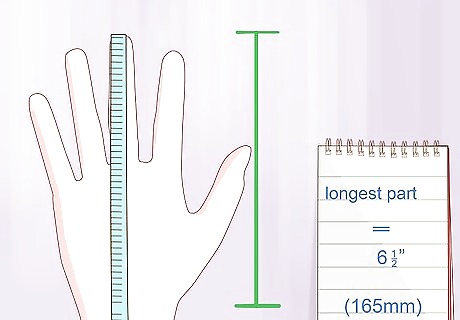
Measure the longest part of your hand. Hold the end of the fabric tape measurer over the tip of you middle finger. Pull the tape measurer down until you’ve reached the base of your hand. As you hold it taut, look at the tape measurer to see how many inches or millimeters it reads at the base of your hand. Write that measurement down.
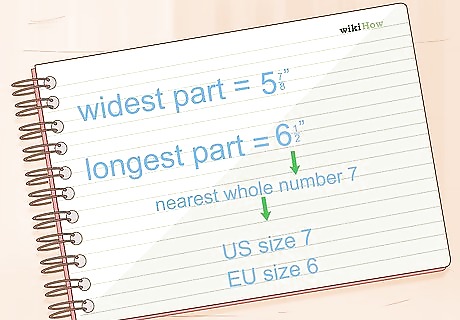
Take the higher of the 2 and round up to the nearest whole number. Take a look at the 2 measurements you’ve written down. They will likely be close, but 1 is probably a bit higher than the other. Round up that higher number to the nearest whole number and that’s your glove size. For example, if you’re using the English measuring system, the width of your hand is 5 ⅞ inches (149 mm), and the length of your hand is 6 ½ inches (165 mm), you’d be a US size 7. In EU sizes, you’d likely be a 6 if you had these measurements.
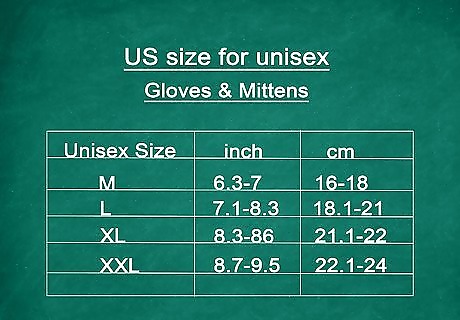
Find your measurement in a sizing chart. Most regular gloves aren’t sized by number, but by small (S), medium (M), and large (L), so you’ll need to find out which one your number size falls under. To do this, look up a chart online. Make sure that the chart applies to you specifically. For example, if you measured in inches and want a general chart, look up “US sizes for unisex gloves and mittens.” Men’s sizes, women’s sizes, and kids’ sizes are all a little different, so keep that in mind when you’re looking at charts. Sizes and sizing charts also vary based on the measuring system used. For example, if you’re a woman who measured your hand and discovered that you’re a US size 7, you’d likely wear a US medium glove. If you’re looking to buy gloves from a specific company, they may provide their own sizing chart. Look this up online.
Finding Your Goalkeeper Glove Size
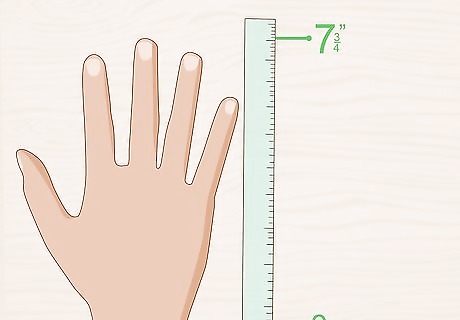
Use a ruler to measure the length of your hand. Hold your hand flat with your palm facing up and your fingers together. Lay a ruler onto your palm vertically with the zero mark at the base of your hand. Record the number in inches or millimeters that you see on the ruler at the top of your middle finger.
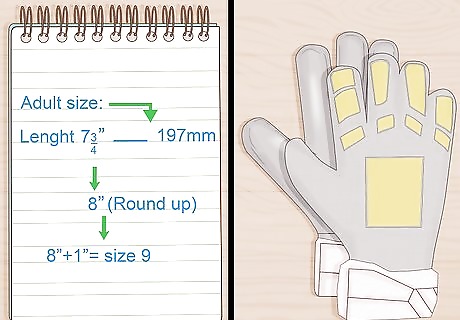
Round up and add 1 inch (25 mm) to determine adult size. Goalie gloves are supposed to fit somewhat loosely. Because of this, you’ll need to add 1 inch (25 mm) in order to get the right size. This is only the case for adult sizes, not youth sizes. For example, if the length of your hand is 7 ¾ inches (197 mm), you’re a size 9 because you’d round up to 8 inches (200 mm) and then add 1 inch (25 mm).
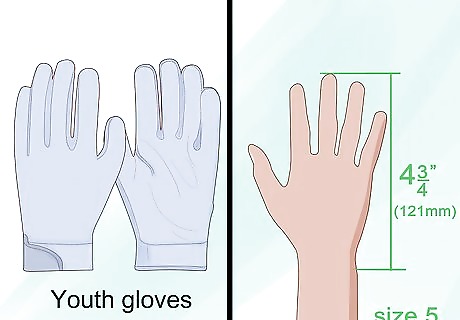
Round up to the nearest whole number to determine youth size. Unlike adult sizes, youth sizes match the hand length measurement. If you’re a kid, all you need to do is measure the length of your hand and round up to the nearest whole number. For example, if your hand length is 4 ¾ inches (121 mm), then you’re a youth size 5.
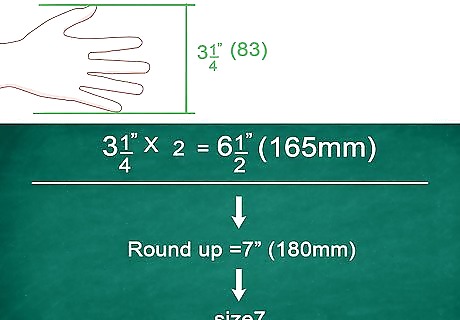
Verify your size by measuring the width of your palm. If the length of your hand measures just over a whole number, then you might be in between sizes. If this happens, you can verify your size by measuring your hand a different way. Use a ruler or measuring tape to measure across the widest part of your palm. Double that number and then add 1 inch (25 mm) to find your size. For example, if the width of your palm measures 3 ¼ inches (83 mm), you’d double that to get 6 ½ inches (165 mm) and round up to 7 inches (180 mm). This means that you’re a size 7.
Learning Your Golf Glove Size
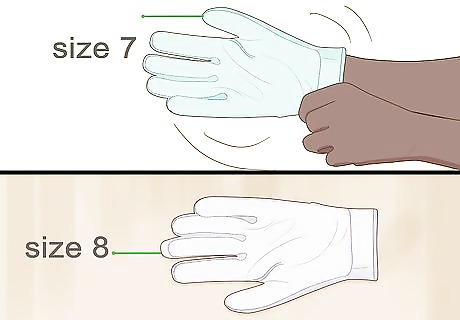
Try different sizes on until the glove fits snug. When looking for golf gloves, the trick is to find a pair that feel like a second skin. Try a few different sizes on to see whether or not they’re easy to put on and if there is extra fabric. You’ll want to go with a size that you have to work onto your hand and that contains no extra fabric on your palm area and above your fingertips.

Go with a glove that’s too small to velcro on completely. If you can stretch the velcro strap on your gloves to cover the velcro completely, then the gloves are too big. Try on smaller sizes until you find one with a strap that can almost cover the velcro, but not completely. The glove will stretch over time, and you’ll eventually be able to pull the strap all the way over. At this point, it’ll be time to buy some new gloves.
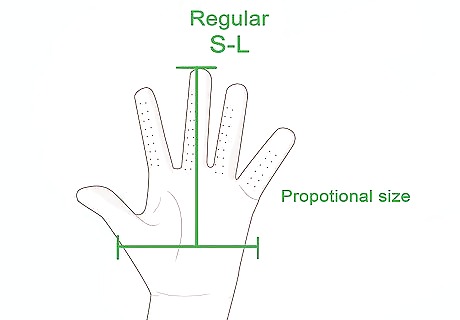
Wear regular sizes if your palm and fingers are proportional. Golf gloves come in 2 different types of sizes: regular and cadet. There are women’s regular sizes that range from small (S) to large (L) and men’s regular sizes that range from small (S) to double extra large (XXL). Try on these sizes if the width of you palm and the length of your fingers are proportional.
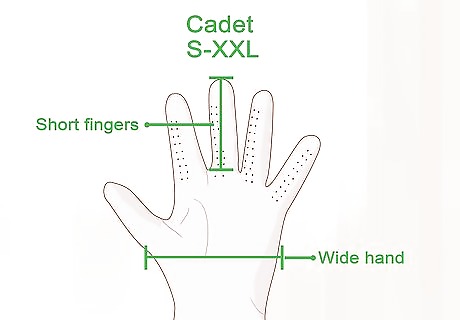
Wear cadet sizes if your palm is wide and your fingers are short. Golf gloves also come in cadet sizes, which are for people who have wider palms than the average person and shorter fingers than the average person. If this sounds like your hands, the cadet sizes should fit you better.

















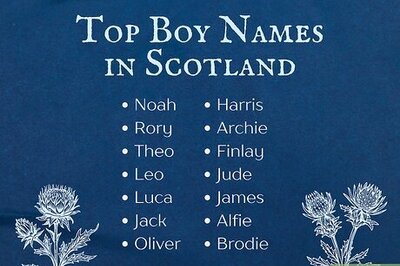

Comments
0 comment